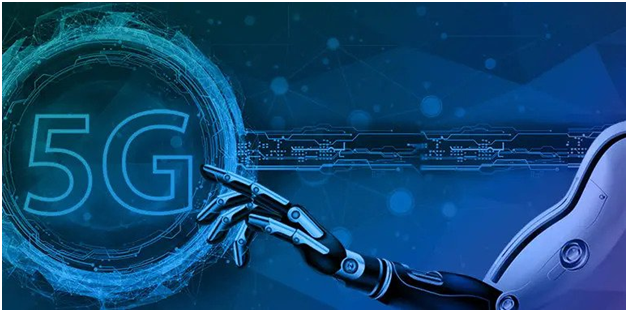By Mr. Abhishek Kumar, Regional Director, Oncam

The world merely witnesses a handful of truly remarkable moments that define the course of history. Thankfully, we’re lucky enough to encounter a number of such game-changing moments as technology continues to disrupt the grand scheme of things. Today, we are at the cusp of a virtual revolution as the fifth-generation (5G) mobile technology is soon about to come to the fore, thereby transforming everything from the mobile network and industrial infrastructure to connectivity (on which we intensely rely today) forever!
The most impressive aspect of 5G technology is that it will connect everything from people and machines to objects and devices. It is going to make everything function more efficiently as ‘a larger whole’ rather than a patchy infrastructure that we have at present. Obviously, it will also introduce us to high-speed and superior connectivity that significantly outpaces our own.
But how fast are we talking about? To give you a contrast, the human reaction time is about 200 to 300 milliseconds, 4G technology functions at about 100-200 milliseconds. Guess what is the reaction time of the 5G technology going to be? Just 1 millisecond.

So, it is beyond doubt that the next-generation 5G technology will twist the very fabric of our present-day infrastructure, thereby adding efficiency, effectiveness, and speed to all industries. Further assisted by Internet of Things (IoT), it will considerably add visibility and eliminate all leakages as well as bottlenecks that we are pestered with today. Thankfully, this transformation will also add substantial value to security and surveillance industry and acquaint us with it in its all-new avatar:
Decreased Turnaround Time
5G technology’s most visible change will be seen in terms of turnaround time. It will considerably decrease the turnaround time and eliminate delays that people and devices experience conventionally. For the security and surveillance industry, it translates into security personnel viewing smooth and real-time video feed, which empowers them to timely identify and respond to critical events. We are further witnessing the rise of edge infrastructure wherein the computational powers are being driven closer to the end-nodes. It eliminates the transmission-based delays, called data latency, from the perspective and empowers digital systems to function in real-time with considerable finesse.
In terms of surveillance operations, the 5G infrastructure enables end-users to upload High-Definition videos to the cloud, download it anywhere and anytime, or leverage video analytics to keep security as detailed as it can be. It also paves the way for superior integration of technology including Artificial Intelligence and Deep Learning.
Vast Connectivity
Cities, public attractions, and other areas that receive high footfall usually have their wireless connectivity bogged down due to infrastructural load. As everyone tries to connect with the ICT infrastructure, the security process can bear a considerable brunt of network lags and inconsistent speeds. This problem gets mitigated with 5G networks as they help in easing up the congestion, enable more devices to connect faster and with consistent speed. For instance, the 4G infrastructure can accommodate 1 million devices in 500 square kilometers. This figure drops down to just 1 square kilometer in the case of 5G infrastructure.
Another advantage in terms of connectivity is that the volume and velocity of data can also increase substantially. We can introduce high-definition cameras for 360o view of any location without limiting ourselves vis-à-vis the video quality. It means that an outdoor camera can cover large open spaces without any challenge or the need for multiple devices.
Enhanced Mobile Capabilities
Remote streaming of security feed has now become imperative for a number of industries and processes including hospitality, healthcare, smart cities, policing, and so on. Here, 5G raises the bar significantly. Individual stakeholders can remotely access crystal clear video feed over any mobile device instantly, irrespective of device or location. So, any critical incident can be responded to most aptly given the severity of its implications. The overall security operations receive a considerable push because of this development as it unlocks an array of possibilities. For instance, suppose an inconsistent phenomenon for which there is an SOP is observed at a location, say, of a hospitality player. The video feed can be viewed and escalated in quick successions unless a resolution is found and the SOP is shared.
Nowadays, we are also observing the rise of remote surveillance with ‘smart glasses’, ‘dashboard cams’, and ‘smartphone-based surveillance’ being increasingly introduced in the homeland security departments. Such integrations are proving themselves to be very useful by making nabbing absconding criminals via facial detection or knowing the hoodlums and their known associates while screening a crowd. These measures dramatically improve the safety and security of citizens. However, they are easier said than done. Facial recognition is a specialized process that requires high-quality video that requires a stable network for transmission. Ensuring the same via a smart glass or a smartphone might not be feasible at all times due to network-related issues. As 5G infrastructure addresses such challenges, this transition becomes easier than it is at present.
In conclusion, there are certain flipsides of technological adoption as well. The digital domain is already known for its vulnerabilities and how they can be exploited by cybercriminals. Today, as we are seeing the rise of new infrastructure, we must ensure that such apprehensions are addressed well in advance – more so, in the case of security and surveillance. Security and surveillance players must focus on integrating their offering with the most evolved cybersecurity standards to ensure that this sophisticated infrastructure does not fall prey to any unwarranted event. Ultimately, doing so will ensure our smooth digital transition with 5G technology.
Since the dawn of our civilization, our phenomenal transitions and progresses have been something that were passed down from generation to generation as folklore – with every successive generation wondering how it would’ve felt like being a part of one! We have to consider ourselves immensely lucky to witness such an important transition in our time. The rise of digital technology – powered by 5G infrastructure – is soon going to change the grand scheme of things, making everything more efficient than it has ever been. Let’s eagerly wait for the technology to scale globally and observe history in making.






